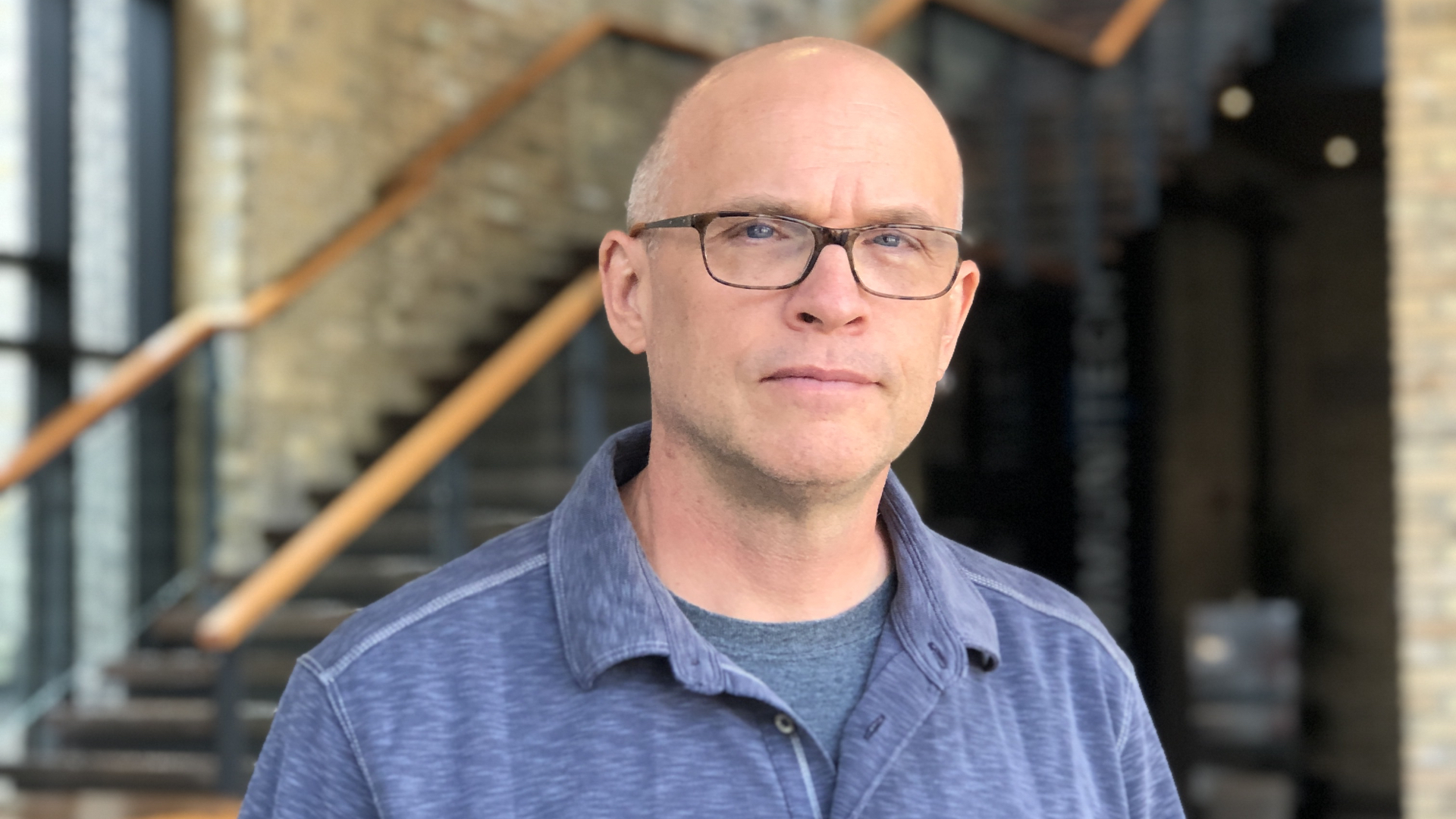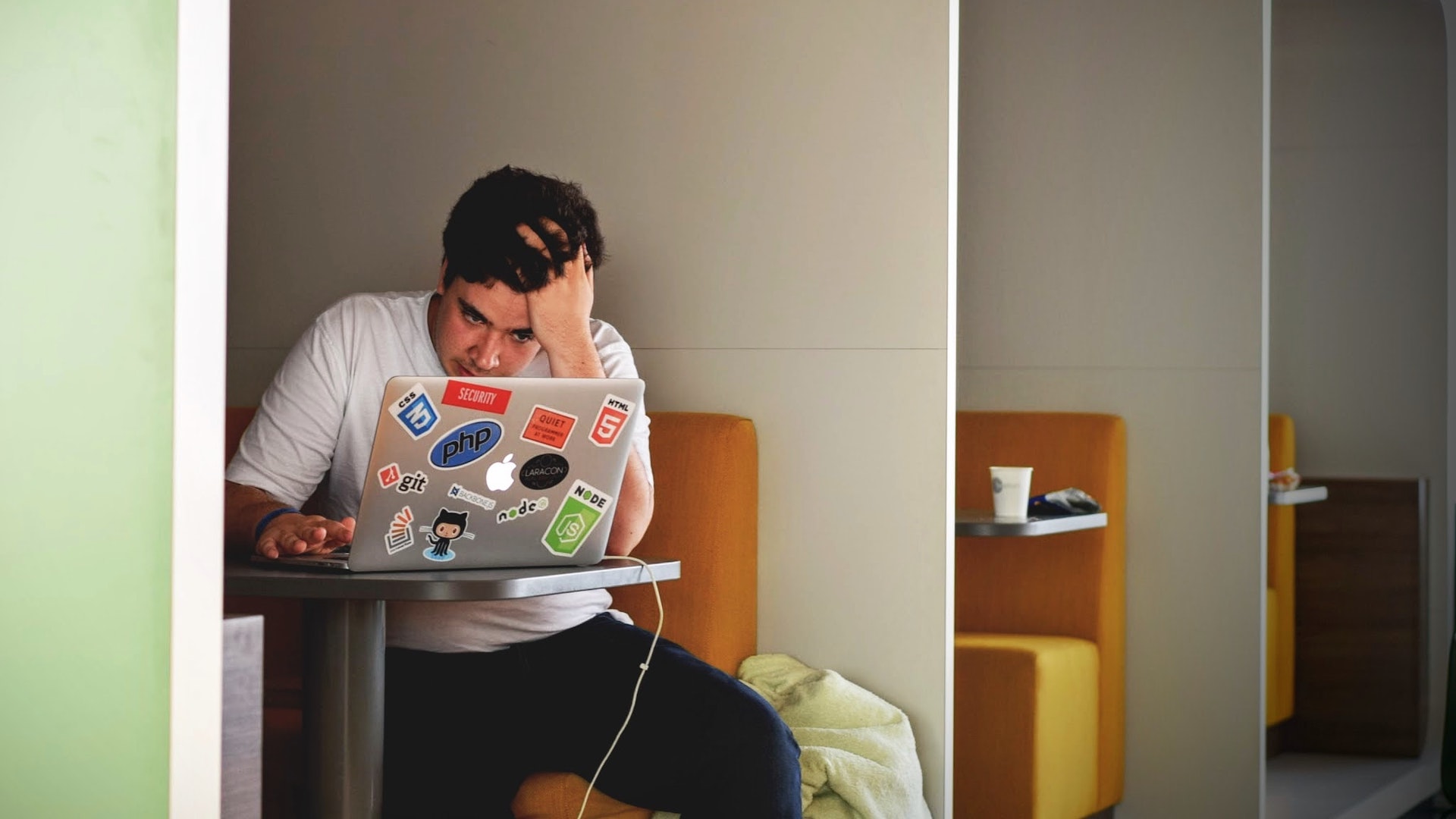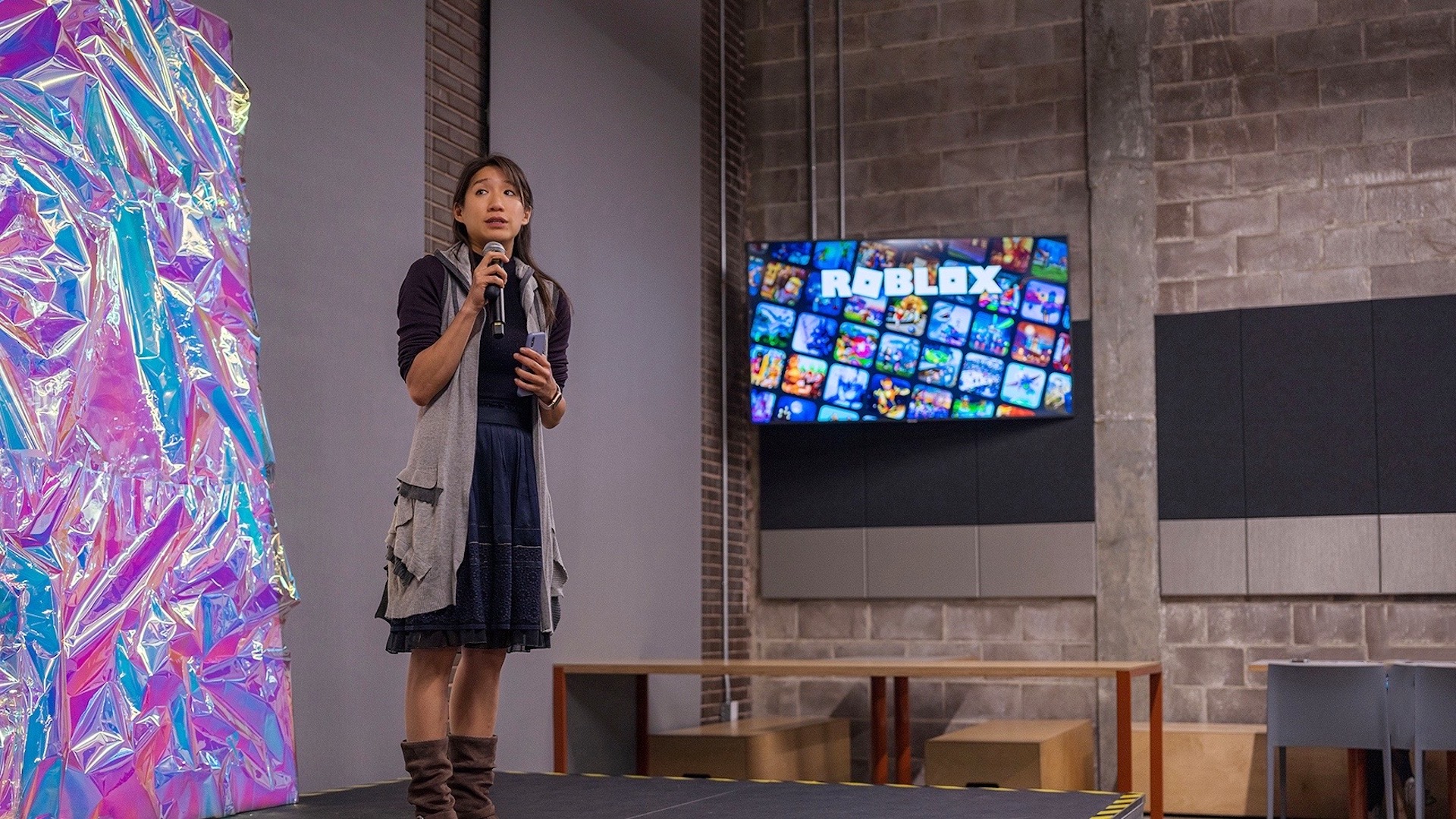There’s no doubt that the pandemic has changed office dynamics, taking away some of the mentorship that used to happen spontaneously between senior user experience designers and younger ones.
Sonova’s David Janik-Jones feels for the young people who’ve gone into UX. Remote work means younger designers don’t have a chance to tap senior UX designers on the shoulder, ask them what they’re working on and then watch them work through it. They don’t get to see the scribbles on the whiteboard or the rough sketches, he said.
“You can't really quickly say, ‘Hey, let's gather together and talk about frustration because this keeps coming up in the last few interviews’ and stick some notes around that. You don't quite get to do that as spontaneously,” said Janik-Jones, who was Sonova’s UX design lead before he was recently promoted to its interim lab director. “And for young designers, those are moments that really show them how things get done, that really show them how ideas get sparked. At the moment I think that group is missing out just a tiny bit.”
As part of our ongoing series about how UX researchers and designers are adapting their work to a remote world, Zeitspace’s Kelly Pedro talked to Janik-Jones about how the pandemic has changed how he’s approached his work and what’s changed about his work as a result.
How has the pandemic changed how you've approached your work?
Fundamentally, design and design thinking is a process that can be done to an extent, remotely. User experience designers, visual designers, etc., have never really been tied down to a location. We’re more interested in the problem and as long as we have the equipment available to us, we can largely do our work. So fundamentally, I don't think the pandemic has changed the work we're doing or the processes we use to solve problems, do design, understand client issues, pain points, etc.
It has raised some challenges, though, in terms of a few of the processes where face-to-face contact is a better environment for the work. So speaking with a client and understanding their needs, as well as some of the processes that we use as designers, we’ve had to adapt.
How have you adapted your work then with respect to some of those challenges?
A lot of it has been solved by just utilizing online and collaborative tools for our work and again, that can be internal to the design side of things. A lot of the software we use — Sketch, Abstract, Invision, Zeplin — those programs have always been collaborative anyway. So it's just making sure that we're using those tools in their collaborative ways to the best of our ability. So that's the first thing for collaboration across larger teams.
Again, we're using online tools now more and more that allow us to do a lot of the processes we've done before in a physical environment. Now, some of the processes we do as user experience designers are fairly easily translatable to a virtual whiteboard — translatable in terms of the mechanics of it, not necessarily the interaction. So for example, customer experience maps or customer journey maps are largely exercises in understanding the stages of a process the user goes through, understanding what they do, the questions they ask, and what they’re feeling, to identify opportunities for features and problems in a particular customer journey or process. That can be easily done on a giant Miro board. And the nice thing about it is there's no space limitations. It can be as big as you want, whereas in a meeting room or office, I might have a limited whiteboard space to do that.
The downside to that is getting it out there to let people know because normally we would leave artifacts like that in the office and invite people in. Now you have to send out links, you have to invite people, they've got to take the time, they may not have used the tool. And that social interaction — if you have two or three people from marketing in a room and they're all contributing to a customer journey map in terms of sticky notes all over the board, there's a dynamic to that. That doesn't happen online.
Some of the other processes — Google design sprints for example — can be adapted to online collaborative tools. I've done it with design sprints, but you lose some of the energy and you lose some of the dynamic back and forth that helps people riff on other people's ideas.
How do you contend with that? Have you found a way to try to address some of those challenges online with the work you’re doing?
We’ve been basically adapting the existing processes in that collaborative online environment and modifying them, or we find they don’t work as well as they did in person. I’ll go back to my example of the Google design sprint. Normally, that’s done in person over a handful of days with a very fixed set of things you do on day one, day two, and day three, etc. And we found you can't engage people online the way you can when that’s being done in person. So we've adapted the Google design sprint. Instead of over five days and 20 to 40 hours of actual work, we can do that now in 10 (hours) online over four days, but it involves external homework for the participants because now they have to do things offline and bring it back. But it still can be done in a quicker manner than it normally would be. So it's just adapting the processes that we already know to the reality that we often can’t be face-to-face anymore.
The upside to that is, it’s very difficult for me, as a user experience designer within a lab space or office space, to gather anybody but my colleagues to do some of these things that involves reaching out to marketing, recruiting users, etc., — those setups that we know we have to do. And they're often geographically limited. With online and collaborative tools, I can do a customer journey map, invite people from my organization around the world and get them to participate when they can.
It’s an interesting point that it opens up collaboration in some ways where it can be asynchronous and you can have people from different time zones contributing when it suits them best. So I can definitely see that you would have that push and pull of benefits and challenges in some respects.
Yes, that's precisely it and as much as designers like myself talk about the fundamental joy of running ideation sessions or design sprints, they never really go off as well as planned. There's always a hiccup along the road somewhere.
Are there other research tools or strategies that you're using now that perhaps you weren't before the pandemic to get those same results?
We've obviously significantly enhanced the amount of work that we do using those collaborative online tools. We didn't do that before. I've always been a fan of a lot of them. We've always used tools to hand off and comment on the work that each other is doing. I mean, JIRA has been around for a very long time, we all use JIRA boards. If you're using the Agile methodology, you're using a JIRA board most likely. We've always used those tools so it's just a matter of increasingly using tools for some of the processes that we would have done traditionally in person. I find that we're still getting the results we're looking for. I mean, if you think about focus groups or user testing where we're asking 100 people questions about their user experience with a particular prototype, we've always done it online. We've done it in person too, but we've always had this large percentage of work we've done online. So I just think it's a matter of shifting more to that realm and adapting those techniques to that space.
Are you running focus groups online? Were doing that before the pandemic?
Yeah, I've done that. But it's also more using tools like collaborative whiteboarding tools, so we can gather feedback from individual users that way. I haven't actually set up and done (focus groups) for various reasons. One of them is that I like being in the room when those things are going on because it's not only the answers that are being given, it's that you get so many non-verbal clues from watching focus groups in action. And especially with one-on-one interviews. That's why empathy interviews are such a powerful tool in user experiences because people say one thing and mean another thing and you can sometimes read that in their body language, the way they're approaching the question, and in their openness. We will sometimes lose that (online). I can gauge people's levels of interest, but I can't see the lean backs, I can't see the hand crossings, I can't see the tensing of the body when they're explaining a story. You sometimes miss the inflection in a voice online where normally you'd pick it up and say, ‘Okay, this is a pain point for this person, you can see the frustration.’ We sometimes miss that in doing interviews online.
We talked a little bit about how you've approached your work now that it’s remote. How have you adapted to remote work?
It depends on the type of person you are. Designers run the gamut. I'm very much on the introverted side of the line. I put on a very good mask when I need to, but to get me out in front of a group of students to talk about design is a difficult thing. I'm very much a thinking designer. I much prefer thinking about the design and actually concretely doing some pixel pushing. So, at a personal level, I haven't had to adapt my mentality very much because I enjoy this way of working. I enjoy not being in an open office, not hearing the chatter, not being interrupted every 10 minutes by somebody who is just walking past my desk and asking me how my day is going or whatever. I mean, I'm happy to answer that in Slack. But at that point I can disengage and come back to where I need to be to focus on a particular problem.
I do miss some of those interactions I have with the design team, with the developers, with people just grabbing people and saying, ‘Hey, I have a quick question for you. Do you mind?’ At the same time, I know there are other designers who are very much less enamored with doing remote work. They are very extroverted, very outgoing, and miss the social aspect of work.
Is there anything that you wish you knew when the pandemic began that you know now?
The length of it as it carries on. I wish I'd known ahead of time because I would have been better prepared to set up some of the processes and things that we need to do as designers that we didn't think about when this first started. We just thought, ‘Oh, this is a temporary little blip. Well, I'll be back to work in three months.’ There was a period of adjustment that if you'd known it was going to be this long we could have made the adjustments quickly, or certainly known that we were going to have to adapt, whereas some of the processes that we've had to go through we've had to adapt on the fly. That hasn’t impacted the quality of the work, but just the amount of time it takes to get some things done. If we knew ahead of time we would’ve been like, ‘OK, we need to set up a way to do Google design sprints right now’ rather than spending a month talking about how we're going to do this. We could have set it up in a week and started one.
The best human beings can sometimes do is react to situations. But it's been good in a way in that we've learned things during the pandemic in terms of how to work and our mental need for the way we work that I think have been valuable for a lot of people on a personal level. Some people like working from home, some people realize that there isn't a need to sit at a desk at an office taking up space.
Thinking about that then is there anything that you've changed that you'll keep doing after the pandemic is over — whatever that looks like and whenever that is?
I think being able to offer the artifacts that user experience designers create and inviting people into those processes through virtual environments will remain quite a strong piece in the arsenal. Only because it's proven effective. I mean, if I look at the past 18 months worth of work, the reports that we produce and the designs we're producing and the way we're testing has been as effective as beforehand. I don't think we've lost anything in terms of the effectiveness of what we do. I don't see that going down. If it has gone down in an organization, then I think it's a systemic thing within that organization or a personal thing for that designer just not being able to adapt. Fundamentally, design is about solving problems. And as long as you can do the research, understand the users needs, do the competitive analysis, do all the pre-work that leads you to the problem statement, I think you're okay as a designer.
Is there anything I didn't ask you that you wanted to add or say?
I wonder where other designers are in this journey and how well they've coped. And I guess the group I feel the most for now that I've been doing design for 30 years are the young people who've gone into UX. I think that for that group, maybe they're the ones suffering the most, because they don't get that close kind of mentorship and don't get to see the work as it's being done. Just the small, tiny little nitpicking thinking that goes on, the scribbling that goes on, and the notes that we make, and the whiteboards that we fill up with scribbles. They don't get to see that because once we have our one-on-one meeting or our UX team meeting for the day, it's like, ‘I'm blocked with this, I'm working on this, I need help on this, I'll get back to you on this in a couple hours.’ Once these things shut off, once the Zoom calls are over, the Teams meeting is done, you may not have that opportunity then to just tap somebody on the shoulder and say, ‘I see you're working on this. Tell me what this is about.’ You can't really quickly say, ‘Hey, let's gather together and talk about frustration because this keeps coming up in the last few interviews’ and stick some notes around that. You don't quite get to do that as spontaneously. And for young designers, those are moments that really show them how things get done, that really show them how ideas get sparked. At the moment I think that group is missing out just a tiny bit.
Miss a story in our series? Catch up on how UX designers and researchers have adapted their work during the pandemic now.
This interview has been edited for length and clarity.





